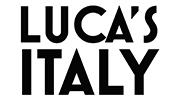Still or sparkling?
I don’t know about you, but on a really hot day, nothing but freezing cold sparkling water will cut it. There’s something about having the bubbles erupt violently in your mouth that really quenches thirst. It’s as good as a cold beer—better perhaps—but without the alcohol.
The north-south divide
The further south you go in Italy, the hotter it gets. Italy’s latitude produces surprising temperature difference even within a hundred and fifty kilometres or so. When visiting the south therefore, I really need sparkling water. Only there’s one problem. South of Tuscany, you can’t get it.
Leggermente or lievemente frizzante
Go into a supermarket in Venice, Florence, Milan, or Turin and the shelves are lined with bottles labelled frizzante. Go into the same shop in Rome, Bari, Reggio di Calabria, or Palermo and you’re more likely to find bottles labelled leggermente frizzante or lievemente frizzante. If you buy and open one of these bottles, you get the pschht but when you drink it, after some very polite bubbles, within a minute or so it’s flat.
Locally targetted products
Even the same brands produced targetted fizz. San Benedetto, for example sells dark blue bottles of frizzante water up north, but mostly green bottles of lievemente frizzante down south.
Local taste
My Roman friends tell me I’m crazy. ‘I don’t know how you can drink that acqua frizzante. The bubbles hurt my mouth! Our lievemente frizzante is much better. And it’s natural.’
But why?
This second point is the reason for the divide. The south of Italy is very volcanic and is dotted with springs producing naturally carbonated water. The north of Italy is not and so the gas gets added. The two end producs are like chalk and cheese. The naturally carbonated water often tastes salty, due to the minerals, and usually quickly loses its fizz; the water with added gas tastes more like water and retains its fizz even after opening.
Evviva la differenza!
In a way, I guess it’s good that the water divide exists. Its shows that things are being sold locally without being transported up and down the peninsula. But from my northern point of view, when I’m trying to cope with the southern heat, a nice bottle of industrial strength fizz would be very welcome once in a while.


100% with you Luca!!! Full strength sparkling water is a real thirst quencher…in a way that the lesser (or even, shock horror…flat) waters are not! Cold, sparkling and even extra ice if it’s REALLY hot.
I’m glad someone agrees with me! 🙂
This is interesting, as I never knew this divide existed. My mother who was southern Italian was an avid drinker of San Pelligrino frizzante as was my father who was from Northern Italian heritage. I never knew either to drink any other type of Aqua minerale. I agree you need the frizzante, cold and bubbly on a hot day to refresh the palate.
San Pelligrino is about the only widely available real frizzante but it costs the earth unfortunately. You’re mother was obviously a very discerning southerner 🙂
Non liscia, non gassata, ma Ferrarelle! I wish I could find it here in California.
Plenty of it in Rome! 🙂
I thought your post was going to be about frizzante vs liscia! I like my acqua cold and frizzante, but Ferrarelle is frizzante enough and it is widely available. Lete is good too. That’s what I drink in Puglia. What I don’t like to drink is acqua liscia or non gassata. It just tastes blah to me. Ciao, Cristina
Haha! No, fizzy or fizzy fizzy. Ferrarelle and Lete and Nepi etc are the ones that just don’t cut it for me. Evviva il nord! 🙂
It was very interesting to read this post, seeing that I often travel to Italy but never have sparkling. I guess I never liked the frizziness. sempre naturale per me 😉
Naturale is whole other blog post. Especially how the name changes depending on where you are: naturale, liscia, ferma etc.
Very true, waiting for that!
🙂
Leggermente frizzante, please! My tastebuds enjoy it much better.
Thank you for making me aware of this difference between the north and the south. I have never thought about it. Now I know why I sometimes have trouble finding the leggermente frizzante water.
You’d be better off in the south then! 🙂
A study was undertaken which showed that consumers of sparkling water had a higher average drinking water as a percentage of total water intake than non-consumers intake. A number of diet drinks are carbonated because it has been suggested that this is one of the ingredients contributing to weight loss.